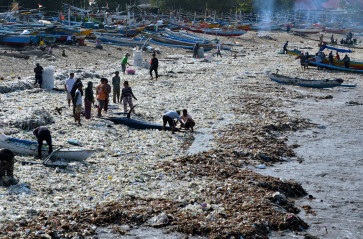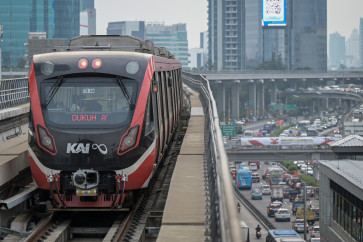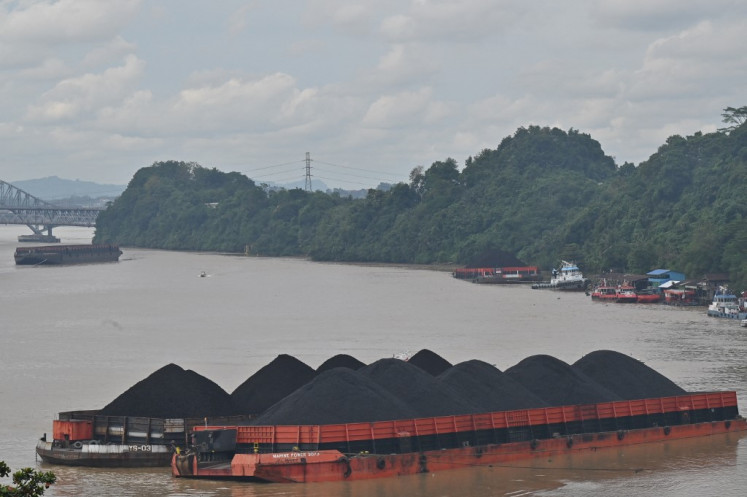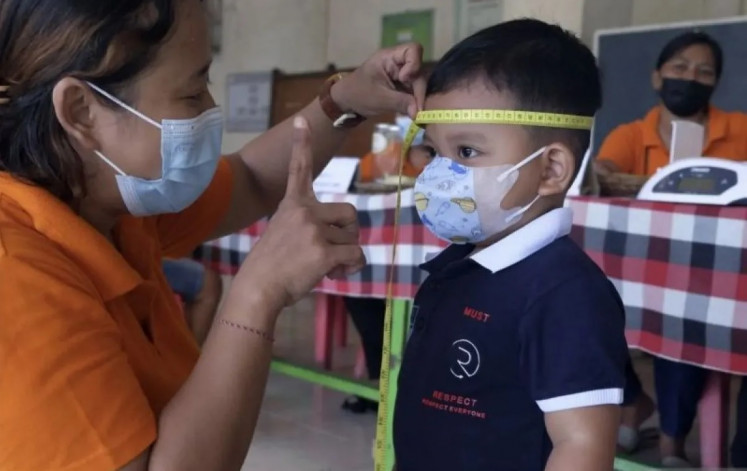Maximizing ASEAN’s renewable energy sources to drive decarbonization, energy resilience
The main barriers to the maximization of renewable energy sources in ASEAN are institutional policy uncertainty on renewable projects, limited access to funding and a lack of appropriate technologies and expertise.
Change text size
Gift Premium Articles
to Anyone

A
s the world recovers from the economic effects of the COVID-19 pandemic, a global energy crisis is looming. In some parts of the world, including in Southeast Asia, energy prices are skyrocketing because of a shortage of supply, particularly of natural gas and coal. As ASEAN heads toward its energy transition, it is vital to maintain energy resilience and security in the region to mitigate future threats of energy crises.
Recently, ASEAN has strengthened its commitment to enhancing energy resilience and improving energy security as a foundation for an inclusive and just energy transition through the adoption of the Bandar Seri Begawan Joint Declaration on Energy Security and Energy Transition.
ASEAN member states recognize that the future energy transition should be approached pragmatically, depending on unique and diverse national circumstances. Renewable energy (RE) can play a crucial role in creating a lower-emissions energy sector. Moreover, indigenous RE energy sources will be essential for protecting ASEAN from the volatility of the global prices of energy, especially of fossil fuels.
Based on the 6th ASEAN Energy Outlook (AEO6), fossil fuels will continue to dominate the energy mix in the region as it fulfils its growing energy demand. This is expected to result in a doubling of the region’s greenhouse gas (GHG) emissions by 2040 to 4,171 metric tons of CO2 equivalent (Mt CO2-eq) from 2017’s 1,686 Mt CO2-eq. It is also expected the region will be a net importer of fossil fuels by 2040.
To accelerate the energy transition while ensuring energy security, ASEAN has set the aspirational target of a 23 percent share of RE in the energy mix by 2025 through the ASEAN Plan of Action for Energy Cooperation (APAEC) Phase II: 2021-2025.
ASEAN is blessed with huge and diverse renewable energy sources, including fertile soil, rivers and tropical climates. The benefits of RE are well documented, such as the creation of green jobs, the limitation of fossil fuel import dependency and the reduction of CO2 emissions. However, there are still plenty of untapped RE sources in ASEAN.
ASEAN countries are rich in variable RE (vRE) potential, solar and wind, particularly in Cambodia, Indonesia, Myanmar, the Philippines, Thailand and Vietnam. The ASEAN Interconnection Masterplan Study III (AIMS III) of ACE estimated that ASEAN member states had a potential of 8,119 gigawatts (GW) of solar energy and 342 GW of wind energy.
As of 2020, the installed capacity of vRE accounted for 23 GW (solar) and 2.7 GW (wind), with Vietnam leading the rapid expansion from 2019 because of solid support and commitment from the government through various incentives, including its generous feed-in-tariffs.
Biomass and hydropower, as baseload renewables, are very competitive due to the mature stage of development in the region. Moreover, geothermal also has bright prospects because of the abundant reserves in ASEAN, specifically in Indonesia and the Philippines.
As one of the most promising RE sources because of the extensive forest and agriculture area in the region, bioenergy is unfortunately not fully optimized. More than 415 GW of potential biomass and biogas capacity in the region are supplied mainly by Indonesia, Malaysia and Vietnam. The region also has a considerable amount of biofuel potential, with 21.5 metric tons of oil equivalent per year, but only 6 GW of bioenergy power plants have been installed.
Indonesia is promoting switching to biofuels for transport by mandating 30 percent biodiesel blending (B30) and targeting the production of B100 by 2022. Indonesia, Thailand and Vietnam have also encouraged the use of biogas as a cooking fuel in the residential sector to replace wood and charcoal. Moreover, bioenergy could potentially generate negative emissions if coupled with Carbon Capture Storage (BECCS).
Hydropower and geothermal energy are attractive in Southeast Asia. Indonesia, as the largest archipelagic country, and the Greater Mekong countries have 75 GW and 53 GW potential of hydroelectric sources, respectively. In contrast, ASEAN as region had only tapped 60 GW of hydropower capacity as of 2020.
On the other side, Indonesia and the Philippines have the world’s second (28 GW) and fourth (6 GW) largest geothermal reserves, respectively, as they sit on the Ring of Fire. By 2020, however, only 4 GW worth of geothermal plants were operational.
The main barriers for maximizing RE sources in ASEAN, such as institutional policy uncertainty on renewable projects, limited access to funding and a lack of appropriate technologies and expertise, need to be addressed. Therefore, several steps should be taken.
First, attract RE investment through policy support and enabling measures. The proper regulatory balance between national energy needs, environmental sustainability and social impact is crucial. The issuance of carbon pricing and green bonds could support greater environmental project effectiveness and increase capital accumulation.
Second, enhance collaboration between public and private sector. Financial support from financing institutions and local banks coupled with efficient bureaucracy would encourage more bankable renewable energy projects.
Third, facilitate RE innovation and enhance local RE and battery industry and professionals by increasing research and development. The growth of homegrown technologies and expertise could drive down the economics and generate green jobs.
Fourth, advance regional power trading, which can balance the supply and demand, tap more potential sources and reduce RE cost by economies of scale.
Lastly, expand international cooperation through knowledge and experience sharing, policy consultation and awareness raising programs.
Moreover, ASEAN needs to learn from the recent energy crisis around the globe, where strategic planning is required to increase the resilience of greater RE utilization by providing sufficient energy storage and balancing the supply and demand of the energy system.
ASEAN member states have diverse and vastly underutilized RE potential. With appropriate storage and a balance of energy supply measures, higher deployment of RE is necessary to accelerate the energy transition and ensure energy security and sustainability in the region. Concrete, collaborative and innovative interventions with key enabling policies are crucial for maximizing local energy systems.
We are racing against time toward maximizing the utilization of RE to mitigate the imminent global energy crisis and accelerate decarbonization toward a low carbon economy.
***
Alfred Christopher Gurning is ASEAN Plan of Action for Energy Cooperation (APAEC) Secretariat officer. Rizky Aditya Putra is senior officer at the APAEC Secretariat. Tyari Octhalya Tadzmara is an APAEC intern. The views expressed are their own.









